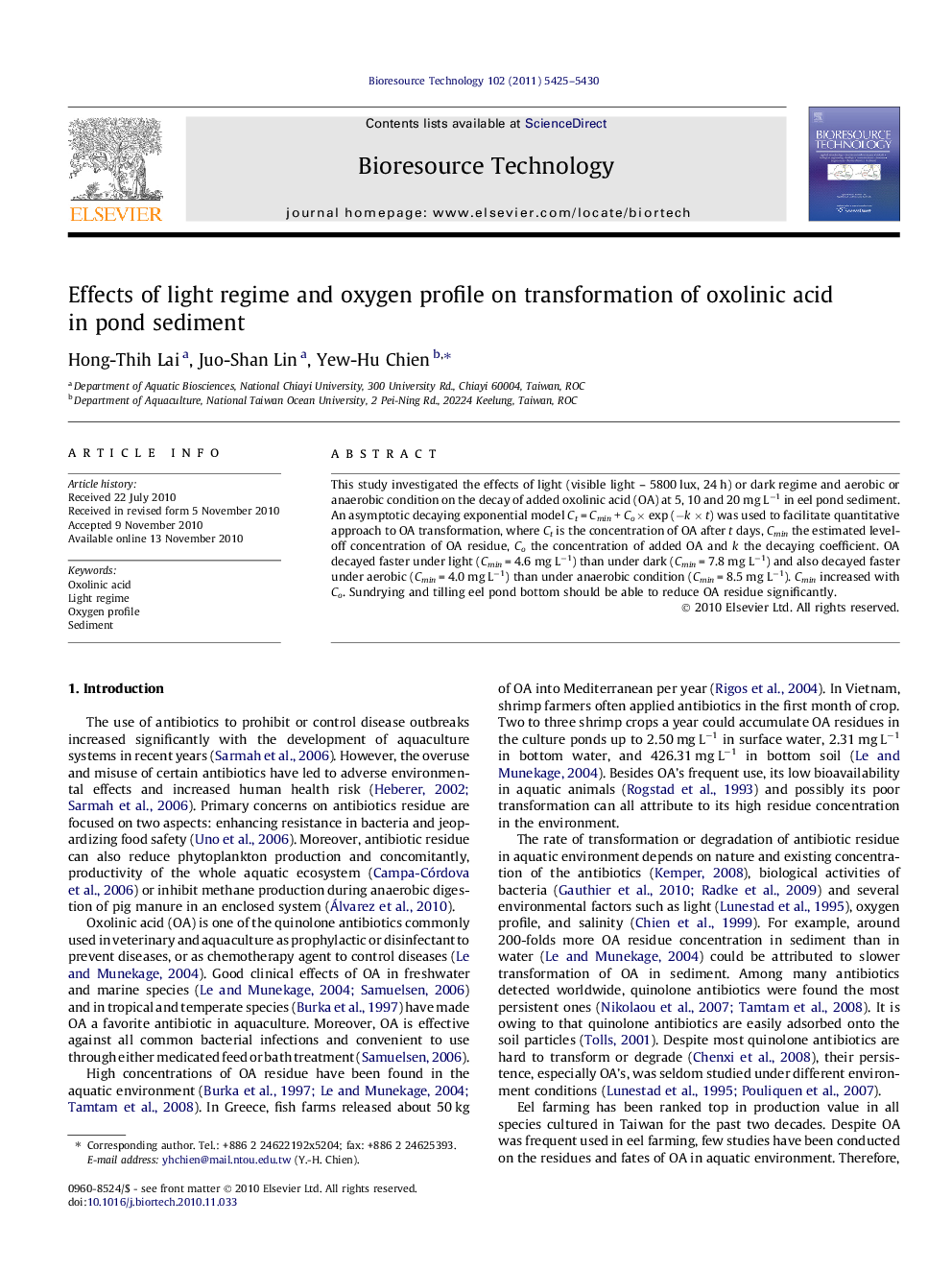| Article ID | Journal | Published Year | Pages | File Type |
|---|---|---|---|---|
| 682058 | Bioresource Technology | 2011 | 6 Pages |
Abstract
This study investigated the effects of light (visible light - 5800 lux, 24 h) or dark regime and aerobic or anaerobic condition on the decay of added oxolinic acid (OA) at 5, 10 and 20 mg Lâ1 in eel pond sediment. An asymptotic decaying exponential model Ct = Cmin + Co Ã exp (âk Ã t) was used to facilitate quantitative approach to OA transformation, where Ct is the concentration of OA after t days, Cmin the estimated level-off concentration of OA residue, Co the concentration of added OA and k the decaying coefficient. OA decayed faster under light (Cmin = 4.6 mg Lâ1) than under dark (Cmin = 7.8 mg Lâ1) and also decayed faster under aerobic (Cmin = 4.0 mg Lâ1) than under anaerobic condition (Cmin = 8.5 mg Lâ1). Cmin increased with Co. Sundrying and tilling eel pond bottom should be able to reduce OA residue significantly.
Related Topics
Physical Sciences and Engineering
Chemical Engineering
Process Chemistry and Technology
Authors
Hong-Thih Lai, Juo-Shan Lin, Yew-Hu Chien,
